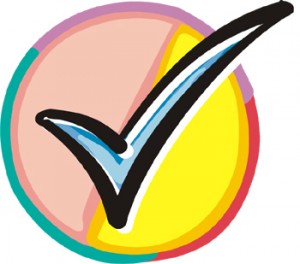
Every translator/editor should create his or her own checklist to ensure that all the necessary steps have been followed. Oftentimes, the client or the project managers themselves are responsible for drawing up a checklist for the translator or editor to go through in order to verify that specific rules and the project’s specifications have been followed.
Some of the most important points to keep in mind are:
1. Spellcheck
Spellcheckers are essential for performing one of the key steps that needs to be done before the final delivery. There are programs that help us detect spelling errors, such as XBench or Snell Spell. And of course we always have the MS Word spellchecker option.
2. Verb Agreement
Do a quick proofreading before delivery to make sure that the verbs agree with the subject and that they are in the correct tense throughout the text. Investing a bit of time on this task can help you eliminate a number of common errors.
3. Adherence to the Glossary
Quite often, customers will want you to follow a glossary that they themselves have prepared, and they will not accept any discrepancy in this regard.
4. Translation of the Text in Its Entirety
Make sure that the text has been translated in full and that you have not skipped any paragraphs or sentences.
5. Consistency of Terms
See that you have not used different words in the target text for a word that is always the same in the source text.
6. Use of Translation Memories
Whenever it’s available, make sure to use the customer’s translation memory in order to avoid inconsistencies with earlier or subsequent projects.
7 – Rules of Capitalization Depending on the Target Language
Keep in mind that different languages follow different rules for the use of uppercase or capital letters. Make sure that the corresponding standard has been applied in the target language.
8 – Translation of Proper Nouns (Names of Cities, Countries, People, Book Titles, Movie Names, etc.)
It is important to do a thorough and exhaustive investigation regarding the translation of certain names. Sometimes there are official translations for certain names. Other times we can just leave them in the source language.
9 – Periods, Full Stops, Commas, Semicolons, Dashes
The use of punctuation marks also varies from language to language. It is important not to copy verbatim from the source language, but rather the punctuation should be adapted to the target language so that the audience can read the final text naturally.
As you can see, it is important that translators, editors and proofreaders follow a checklist that will force them, so to speak, to review the translation one last time, thus ensuring that the customer will be satisfied with the work submitted.
To read the original Spanish post go to:
¿Qué criterios de revisión se deberían incluir en una checklist?
